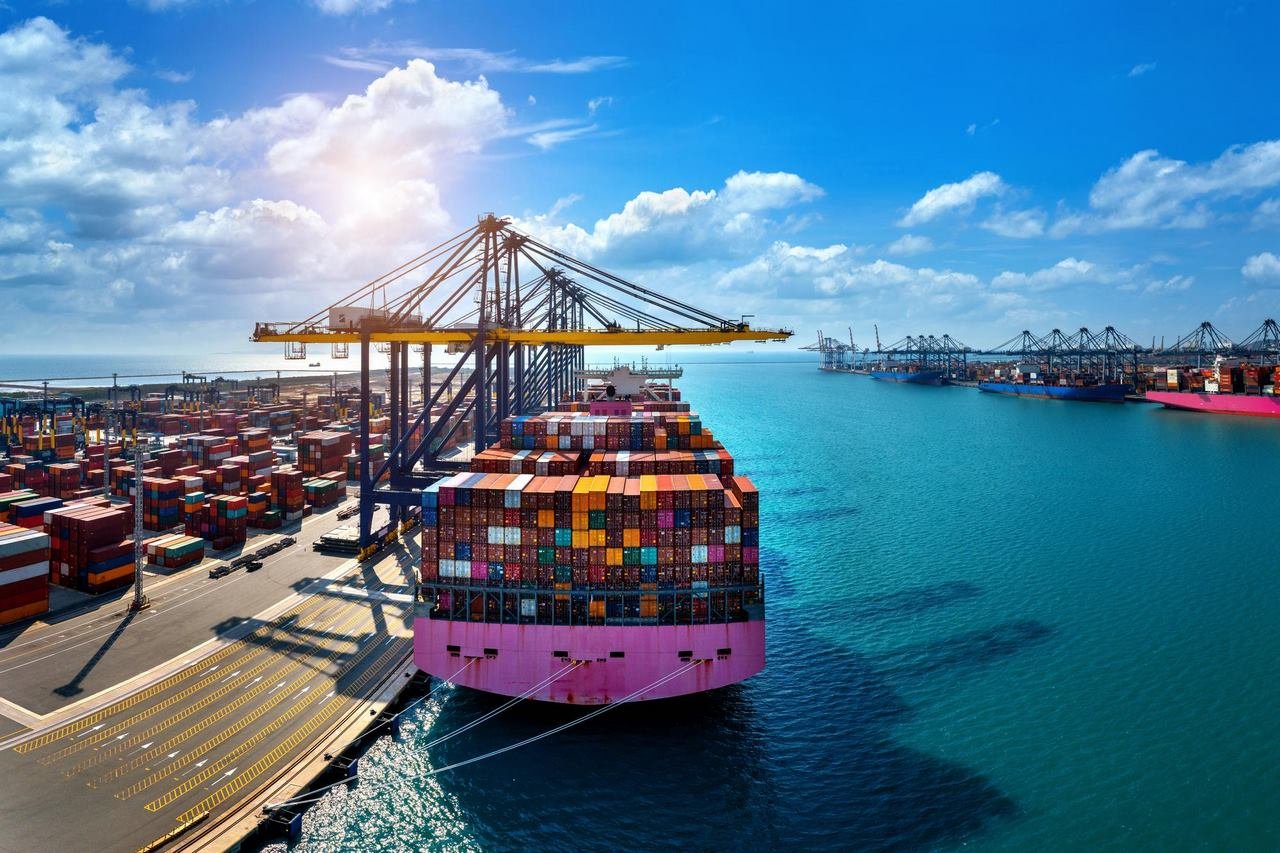The modern global economy relies heavily on raw materials—particularly minerals and metals—as foundational inputs in everything from construction and manufacturing to electronics and energy storage. But in 2024 and beyond, it’s not just geological availability that determines pricing—it’s inflation, war, trade policy, and shifting demand curves. At Steelbridge Export, we’ve seen firsthand how shifts in the global economic climate can upend the worldwide supply of minerals and metals, and how stakeholders must adapt to stay resilient.
The Impact of Global Economic Trends on Raw Material Prices
This article dives into the key economic trends that affect mineral prices globally and offers strategic insights into managing risks and opportunities in the raw materials sector.
The Global Raw Materials Framework
To understand price behavior, you first need to understand how interconnected today’s mineral markets are. The worldwide supply of minerals and metals relies on mining in Latin America and Africa, refining in Asia, financing in Europe, and consumption in the U.S. and China. It’s a true global web.
Any disruption—whether economic, political, or logistical—reverberates across the entire system. That’s why commodity buyers, industrial firms, and investors must monitor more than just market prices—they must watch economic indicators closely.
Inflation and Interest Rate Pressures
Inflation increases the cost of mining operations (due to fuel, labor, and equipment), raises shipping prices, and weakens consumer and industrial demand. As central banks raise interest rates to combat inflation, investment in infrastructure tends to slow—reducing immediate demand for raw materials.
Yet ironically, when inflation runs high, investors often turn to commodities as hedges, which increases speculative demand for minerals like copper, gold, and lithium. This dual pressure on the worldwide supply of minerals and metals can create sudden price spikes followed by sharp corrections.
Currency Fluctuations and Import Costs
Since commodities are globally priced in U.S. dollars, a strong dollar makes raw materials more expensive for countries using weaker currencies. This tends to reduce demand in some markets and alter trade flows.
For example, countries in Southeast Asia or Sub-Saharan Africa might reduce imports of steel or copper when the dollar is strong, reshaping global demand and shifting inventory buildup elsewhere.
Trade Tensions and Export Restrictions
Trade wars, such as those between the U.S. and China, and sanctions on countries like Russia and Iran, have disrupted the availability of critical minerals.
In many cases, countries with significant deposits (like Indonesia with nickel or Chile with lithium) are restricting exports or nationalizing resources. These moves create artificial scarcity, altering the worldwide supply of minerals and metals and driving up global prices.
Geopolitical Disruption and Resource Nationalism
Armed conflicts and rising nationalism are increasing government intervention in mining sectors. Ukraine, Sudan, and the Middle East are examples where conflict has severely disrupted operations or shipping.
At the same time, many governments are pursuing “resource nationalism,” placing export taxes or demanding local processing to retain more value. This is reshaping long-standing trade routes and altering investment dynamics in mineral-rich regions.
Green Energy Demand and the EV Boom
The energy transition is a structural force that is altering the mineral economy long-term. Electric vehicles, solar panels, and battery storage systems require massive amounts of copper, cobalt, lithium, nickel, and rare earth elements.
This surge in green technology means that the worldwide supply of minerals and metals is under growing pressure—not just to supply more, but to do so more sustainably and reliably.
Case Example: Lithium and Cobalt Volatility
In 2022-2024, lithium prices skyrocketed due to EV demand. Then, oversupply from new mines in Australia and Africa brought prices back down. But looming demand from global automakers will likely send prices up again.
Similarly, cobalt—critical for battery cathodes—has seen political disruption in the DRC (Democratic Republic of Congo), which produces over 60% of global supply. A minor policy change there sends price shockwaves across the globe.
Weather Events and Climate Policy
Climate-induced disasters are another major disruptor. Floods in Australia halted iron ore shipments. Droughts in Chile impacted copper mining. Hurricanes in the U.S. Gulf reduced refinery output.
Additionally, climate regulations are forcing companies to decarbonize their supply chains. Carbon pricing, emissions disclosures, and ESG compliance are all adding cost layers to mining and metal trading.
These factors reduce short-term supply and increase long-term production costs—pushing prices higher across the worldwide supply of minerals and metals.
How Industries Can Navigate Price Volatility
As a buyer, trader, or investor, how can you mitigate the risk of global volatility?
1. Strategic Sourcing Diversification
Relying on a single country or port is no longer sustainable. Companies must invest in multi-region sourcing, dual-supply frameworks, and alternative logistics pathways.
2. Long-Term Offtake Agreements
Lock in prices and supply with long-term contracts, especially in critical minerals. These agreements can hedge against both scarcity and speculation.
3. Stockpiling Critical Inputs
Building strategic reserves—similar to government energy reserves—offers a buffer against unpredictable shocks.
4. Currency Risk Management
Use financial tools to hedge against dollar volatility, especially when importing from multiple countries.
5. ESG and Compliance Integration
Building transparent, ethical, and compliant sourcing partnerships isn’t just good PR—it ensures continued access to European and U.S. markets where regulation is tightening.
Looking Ahead: The New Rules of the Raw Material Economy
We are in a new era where raw materials are no longer just inputs—they are strategic assets. With competing pressures from economic cycles, politics, environmental policy, and sustainability expectations, the worldwide supply of minerals and metals is now a critical area of risk management.
Companies that adopt a proactive, intelligent sourcing strategy will not only maintain business continuity but gain competitive advantages in pricing, reliability, and brand equity.
For deeper insights, trusted industrial partnerships, and tailored sourcing strategies for global materials, visit yenisana.com.
FAQ
- 1. What are the main economic factors affecting global raw material prices in 2024 and beyond?
The key factors include inflation, interest rates, currency fluctuations, trade wars, and geopolitical instability. Inflation increases operational and shipping costs, while rising interest rates suppress infrastructure investment. Stronger U.S. dollars make raw materials costlier for other countries, reshaping trade flows. Trade restrictions and armed conflicts also limit supply and cause price volatility across metals like copper, lithium, and nickel. - 2. How does inflation impact the mining and global supply of minerals and metals?
Inflation increases the costs of fuel, labor, and equipment, raising overall mining expenses. It also discourages industrial consumption due to higher end-product pricing. However, commodities like gold, copper, and lithium may attract speculative investment as inflation hedges, creating price spikes followed by unpredictable corrections. This dual effect contributes to unstable raw material pricing. - 3. What role does the green energy transition play in shaping mineral demand?
The transition to clean energy, including electric vehicles, solar panels, and battery storage, is rapidly increasing global demand for lithium, cobalt, nickel, and rare earth elements. This structural demand is placing pressure on global supply chains and elevating prices. Nations are racing to secure strategic reserves and supply agreements for critical minerals, making them central to energy and industrial policies. - 4. How can companies mitigate volatility in raw material prices and supply?
Businesses can protect against volatility by diversifying sourcing across regions, signing long-term offtake agreements, building input stockpiles, using currency hedging tools, and aligning with ESG regulations. These strategies reduce dependence on single markets and enhance supply chain resilience in the face of economic or geopolitical disruption. - 5. What is “resource nationalism” and how is it influencing global metal trade?
Resource nationalism refers to policies where governments exert more control over natural resources, often through export bans, taxes, or mandated local processing. Countries like Indonesia (nickel) and Chile (lithium) are restricting raw mineral exports to retain value domestically. This disrupts global supply chains and increases prices as buyers scramble for alternative sources.












1 Comment
[…] more to read: The Impact of Global Economic Trends on Raw Material Prices […]